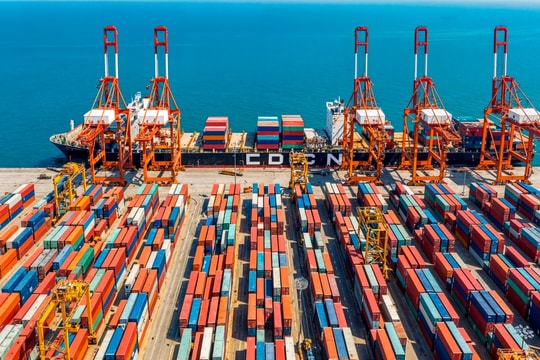
Cybersecurity Threats in the Supply Chain in 2024
According to a report from the National Cybersecurity Association, over 659,000 cyberattacks targeted agencies and businesses in Vietnam in 2024, with at least 46.15% of organizations affected. Notably, advanced persistent threats (APTs) accounted for 26.14%, exploiting vulnerabilities in software, management processes, configurations, access controls, supply chains, and human factors. Additionally, 14.59% of organizations reported ransomware attacks, causing operational disruptions and severe reputational damage.
Although the total number of cyberattacks in Vietnam has decreased for four consecutive years, with 19,816,401 threats blocked in 2024 compared to 29,625,939 in 2023, cyberattacks on supply chains continue to rise, particularly targeting the healthcare, telecommunications, and financial sectors. These incidents expose vulnerabilities in digital systems and sensitive data communications, posing significant threats to modern supply chain operations.
Challenges Facing Cybersecurity in the Supply Chain
One of the biggest challenges is the shortage of dedicated cybersecurity personnel. Surveys indicate that over 20.06% of organizations lack specialized security staff, and 35.56% have no more than five cybersecurity professionals—an insufficient number to meet actual demands. This shortage leads to an overload in risk management and reduces the effectiveness of responses to security incidents.
Additionally, reliance on third-party vendors creates vulnerabilities within the supply chain. Supply chain attacks often exploit weaknesses in the interconnected networks of suppliers, leading to widespread consequences that affect multiple organizations.

Moreover, the adoption rate of "Make in Vietnam" cybersecurity products and services remains limited, accounting for only 24.77%. This reveals a lack of trust in local technology and continued reliance on foreign solutions, posing challenges to developing a robust domestic cybersecurity ecosystem.
Solutions to Strengthen Cybersecurity in the Supply Chain
To address these challenges, businesses should implement the following measures:
- Invest in Cybersecurity Personnel: Enhance training and development for cybersecurity professionals to ensure sufficient staffing for monitoring and responding to threats.
- Assess and Manage Third-Party Risks: Conduct regular security assessments of third-party vendors to ensure compliance with security standards and prevent system vulnerabilities.
- Prioritize Domestic Cybersecurity Solutions: Encourage the use of "Make in Vietnam" security solutions to reduce reliance on foreign technologies and promote the growth of the local cybersecurity industry.
- Implement Emerging Technologies Securely: When adopting new technologies such as AI and IoT, businesses must ensure their integration into a comprehensive security framework, incorporating advanced encryption, strict access controls, and continuous monitoring.
Cybersecurity in the supply chain faces complex challenges, from workforce shortages to vulnerabilities in vendor management and reliance on foreign technology. To safeguard systems and data, businesses must proactively invest in human resources, tighten risk management, prioritize domestic solutions, and adopt emerging technologies securely. Only then can supply chains withstand increasingly sophisticated threats in the digital age.


.jpg)


.jpg)







.png)







.png)